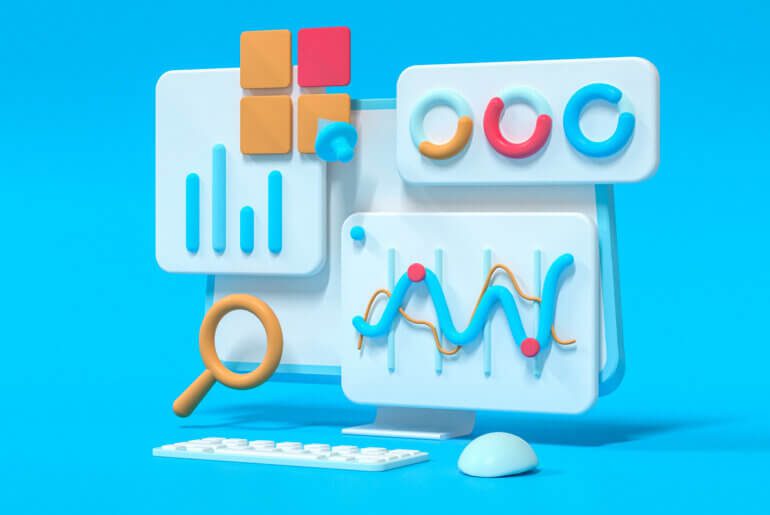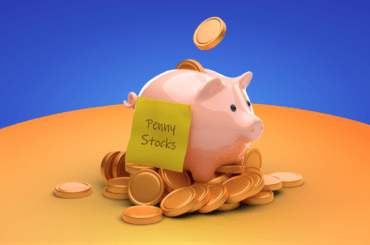Many people dream of making money on stocks of giant companies like Microsoft, Facebook, or Apple. However, buying and selling these shares is not easy and not available to everyone. But everything changes with CFDs on stocks at IQ Option.
At IQ Option, traders can invest in the shares of hundreds of companies with CFDs. Let’s find out what CFD is and how to use it on the platform.
Stocks VS CFDs on stocks
CFD (Contract for Difference) is a simple, inexpensive contract that allows you to trade financial instruments by speculating on the asset price.
The rules for CFD and regular trading are pretty much the same. However, with CFDs, you don’t have to physically own the underlying asset. Instead, you buy a contract between you and your broker. In this case, you predict the future price movements and earn or lose money depending on the trade’s outcome. This means that you do not have to buy the expensive stocks of big companies, but you can still benefit from them!
| Feature | Share trading | CFDs on stocks |
| Physical share ownership | Yes | No |
| Leverage | No | Yes |
| Broker | Yes | Yes |
| Timeframe | Long-term | Short-term |
| Voting power | Yes | No |
| Ownership transfer | Yes | No |
| Dividends | Yes | No |
| Stamp duty | Yes | No |
For a better understanding of the principles of СFD, read the article on the basics of stock trading.
Stocks available at IQ Option
IQ Option’s stock list includes over 190 stocks of the world’s most renowned companies in different sectors: IT, energy, healthcare, real estate, communication services, utilities, consumer discretionary, financials, materials, industrials, and consumer staples.





You can choose stocks to trade by checking the top-performing ones in the Stocks section of the IQ Option website. Since CFDs on stocks can be traded in both upward and downward directions, the list of Top Losers can also motivate your stock pick. Alternatively, browse IQ Option’s stock collections: from top investors’ choice to the most promising names in IT.
Learn more about stock choice in our article on how to always pick the best stocks.
How to trade stocks on IQ Option
- Register and verify your account
If you are already an IQ Option user, log into your account. If this is your first time at IQ Option, you need to register an account. To do this, use your email address or the social login option.
After registration, you will have access to 2 types of accounts: Real and Demo aka Practice. You can start trading right away, no additional action is required.
- Make a deposit
Before opening your first real stock deal, you have to fund your account. The minimum deposit amount is $10 or the equivalent in your account currency. The broker does not charge commission on deposits.
To deposit money into your account, click the Deposit button in the upper right corner of the screen. Then, select a payment method, specify the amount, and click Continue.
For more details, read our step-by-step guide on deposits.
- Choose the right time to trade
Unlike the Forex market that is operational round-the-clock 5 days a week, the global stock markets work limited hours. The times at which different countries’ stocks can be traded also differ according to the timezone of each country. For example, you can trade European stocks while the U.S. stock exchange is closed and vice versa.
| Stock exchange | Trading hours (GMT) |
| New York Stock Exchange | 2.30pm – 9pm (no lunch break) |
| NASDAQ | 2.30pm – 9pm (no lunch break) |
| Japan Exchange Group | 12am – 6am(lunch 2.30am – 3.30am) |
| Shanghai Stock Exchange | 1.30am – 7am(lunch 3.30am – 5am) |
| Hong Kong Stock Exchange | 1.30am – 8am(lunch 4am – 5am) |
| Euronext | 8am – 4.30pm (no lunch break) |
| London Stock Exchange | 8am – 4.30pm (no lunch break) |
| Shenzhen Stock Exchange | 1.30am – 7am (lunch 3.30am – 5am) |
| TMX Group (Toronto Stock Exchange) | 2.30pm – 9pm (no lunch break) |
| Bombay Stock Exchange | 3.45am – 10am (no lunch break) |
You don’t have to memorize this information — the IQ Option platform will display the hours for a chosen asset and show you when the exchange will open.
- Open a trade:
- First off, click the Open New Asset button in the upper left corner of the Traderoom and choose Stocks from the list.
- Choose the company which shares you want to trade. Hover over the asset’s title or click on the i icon on the left to see the full information on the stock.
- Before you open a trade in a certain direction, analyze the price chart using technical indicators. Moving Average, MACD, RSI, Bollinger Bands, Stochastic Oscillator, Ichimoku Cloud, and Fibonacci Retracement Levels are some of the commonly used indicators for stock trading. Go to the Indicators tab in the bottom left, choose and set up the necessary ones, and apply them on the chart.
Don’t forget to take fundamental factors into account. News and Earnings Calendar in the Market Analysis tab will help you do that.
The Asset Info section is also very helpful in analyzing the asset’s performance. You can find it under the asset title upon hover.
The Info section contains all the details you need to know: price rate and change (from 1 minute to 1 year), traders’ sentiment showing what other traders think of the price movement, and the basic description. Trading schedule, commissions, and spread info is available from the Trading Conditions section.
- Enter investment amount. The minimum investment starts from $1 or its equivalent in your account currency.
- Select the multiplier. It allows you to trade CFDs on stocks with leverage up to 1:20. I.e., you can borrow money from the broker in order to operate more funds than you actually have.
To choose the multiplier for your position, click Multiplier and choose from the suggested options. Remember that a leveraged position means not only a higher potential profit but also a higher potential loss.
- One important thing to do before placing a trade is to use the Stop-Loss and Take-Profit feature. Thanks to this, your position will be closed automatically once it reaches the acceptable level of loss or a desired level of profit.
Another risk management tool — Trailing Stop — will automatically shift your loss limit in case the price is moving in the desired direction. If the deal is out of money but you believe the price will reverse soon, you can use your balance to keep the position open. In this case, the system will keep your position live even when the loss reaches 95% and hits the autoclose level.





- Press Buy if you think the price will go up, or Sell if you think it will move downwards. There’s no expiration date — the further the market moves in your direction, the more you earn. You can wait until the deal is closed automatically at the Stop-Loss or Take-Profit level or close it manually by pressing the Close button in the upper right corner.
Note that if you want to keep your position open overnight, you’ll have to pay a small overnight fee. The overnight funding conditions for the chosen asset can be found in the Asset Info section.
Withdraw profit
To request a withdrawal, click on the user icon at the upper right and select the Withdraw Funds option.
The minimum withdrawal amount is $2 or an equivalent in your account currency. Each trader is eligible for 1 free withdrawal per month. If you’d like to cash out more often, you’ll have to pay a 2% fee, yet no more than $30. Normally, the request is processed within 1-3 days.
For more information on how to cash out at IQ Option, check our complete withdrawal guide.
Conclusion
Trading stocks at IQ Option implies dealing with contracts for difference, which differs from “The Wolf of Wall Street” type of trading. The benefits of CFD trading are that you can speculate on the price movement without physically owning the asset, trade with leverage, and skip all the hurdles associated with stock exchanges.
IQ Option features CFDs on stocks of almost 200 companies. Tight spread, no commission on deposit, free demo account, and easy registration ensure a great user experience and allows you to open your first deal on the very first day.



